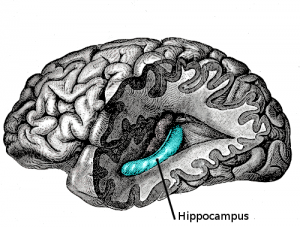Mindful Meditation: A Simple Solution to Semester Stress
Editor’s note: This piece was originally published on February 24, 2017. But hey, we’re all stressed right now. Good luck on your finals this week!
March is just around the corner. For most of us, we are officially a month or more into the spring semester. Assignments are starting to pile up, the workplace is getting busier and some of us have already abandoned our New Year’s resolutions. We suddenly have less free time, and much more stress.

Stress in moderation can be a good thing, pushing us towards our goals and keeping us on track. But the way that many of us deal with it not only makes us unhappy, but can be dangerous. In fact, numerous illnesses many of us face later in life can be attributed to chronic stress. In some cases, it can even lead to serious mental illness.
Like most, I’m no stranger to stress. My junior year of high school, I had a full load of classes, a varsity slot on the track team and a not-so-part-time job. I was busy from the moment I woke up until my head hit the pillow. Being spread so thin eventually wore me down, but instead of slowing down, I sped up, thinking that if I didn’t have time to be stressed those feelings would just go away. When summer finally came I started having anxiety attacks, another health issue that can be caused by chronic stress. I knew I needed to find a way to cope.
That’s when I discovered it—my go-to method of stress-relief and self-soothing. Something so beautifully simple I couldn’t believe that I hadn’t thought of it before. An ancient practice with numerous health benefits that science is finally catching up to: Meditation.
 New studies are emerging all the time that are proving that a meditation practice can be a real asset to your overall well-being. They encompass everything from stress reduction and improved focus to cardiovascular health, stronger immune-functions and slower aging. A 2011 Harvard study concluded that meditating can even contribute to volume changes in the brain, increasing the size of the hippocampus, the part of the brain directly related to memory and learning. Despite these advantages, only 8% of U.S. citizens practice it.
New studies are emerging all the time that are proving that a meditation practice can be a real asset to your overall well-being. They encompass everything from stress reduction and improved focus to cardiovascular health, stronger immune-functions and slower aging. A 2011 Harvard study concluded that meditating can even contribute to volume changes in the brain, increasing the size of the hippocampus, the part of the brain directly related to memory and learning. Despite these advantages, only 8% of U.S. citizens practice it.
Contrary to the stereotypes, you don’t have to listen to a sitar playlist on your yoga-mat while burning incense to meditate. It can be done anywhere, anytime, by anyone. If the semester is starting to weigh down on you, maybe it’s time to finally try it out.
Guided meditations are a great place to start. One of my favorites is the Headspace app, started by master-of-the-mind Andy Pudicombe. The TED Talk he gave in 2012 was what inspired me to get started. The ten free sessions Headspace provides can help you build a great base for your practice. Of course, there’s plenty of videos and playlists you can find online, but for some, guided meditations can be constricting.
One of the simplest meditation techniques is called mindfulness meditation. The practice can reduce the symptoms of anxiety and depression just as well as prescription medications, while increasing focus and attention span. For me, mindfulness meditation helped me to better understand my thought patterns–something I’m grateful for every day.
You can try it out right now, and feel yourself relax in just three minutes.
Step One: Sit down in a comfortable position. It doesn’t have to be crisscross on the floor; sitting in a chair is absolutely fine. Either way, sit in a posture your mother would be proud of.

Step Two: Set a timer on your phone for three minutes. You can build up to more time, but the length of a pop song is a good starting place for beginners.
Step Three: Close your eyes. Focus on your body weighing down into the floor or chair. Start to listen to the sounds in your environment, letting even the quietest of sounds enter your awareness.
Step Four: Move your focus to the natural rhythm of your breath. Notice where you feel your breath the most. Is it the air entering your nose or mouth? Is it the expanding of your chest? Your belly? Draw your attention to that specific area, and begin counting your breaths. One on the inhale, two on the exhale, up to a count of ten. Then start over again from one. When you lose focus, and you will, don’t get frustrated; it’s completely normal, even for long-time practitioners. Just focus again on your breath and start your count from one.
Step Five: When the timer goes off, briefly bring your focus back to the weight of your body to become grounded. Open your eyes, and notice how you’re feeling in comparison to when you started.
Keep in mind (pun intended) that the purpose of meditation is not to clear your mind, but to learn to understand it. While focusing on your breath, notice where your mind tends to wander off to. This can tell you a great deal about your stresses and desires, giving you a much-needed insight. Most of the time our mind is occupied with work, TV, or the mindless scrolling of social media; we need time to let out minds wander, so we can better focus when we so frequently need to.
Mindfulness meditation is just one of the many different techniques at your disposal, but I believe it is the easiest way to break into the world of meditating. You will feel the effects of even a brief three-minute session almost immediately, allowing you to approach the rest of your day with a fresh perspective and calm demeanor.
With midterms approaching and plenty of papers to write—or maybe grade—meditation might be just what you need.









Leo Miele • Jun 29, 2017 at 10:08 am
A great article! Meditation truly has the best benefits. http://organicdailypost.com/the-benefits-of-meditation/
Allison Anderson • Apr 13, 2017 at 8:38 am
Dear Bryden Smith,
I loved how you wrote your article (Mindful Meditation: A Simple Solution to Semester Stress). What I learned was more steps on how to reduce stress during school and life. I connected to the article because I can get stressed really easily on tests, and other subjects. I also stress about the little things and then I find out that there was nothing to be stressed about. I have tried almost everything that I can think of when I get stressed. What I do to help me de-stress is turning off all electronics off and just unplugging from the world.
Or sometimes I just need to go and workout or go shopping read a book or two. This article really helped me to have more stress relieving solutions. I was wondering why you wrote the article? Are there other stress relieving solutions out that you have found to work? What other solutions can you come up with on your own? Sorry for all the questions , I just like to know what else I can do to de-stress. Thanks for writing the article again. It was a great help to have the steps too. Have a great day.
Sincerely
Allison Anderson
Bryden Smith • Apr 13, 2017 at 4:12 pm
Allison-
There are no all-encompassing methods to relieving stress, but the best thing you can do is learn to accept the things in your life. I personally found mediation to be a great place to start.
I was inspired by a TED TALK to start meditating, so I wrote this with the hope that others might want to give it a try.
Glad you enjoyed the article!